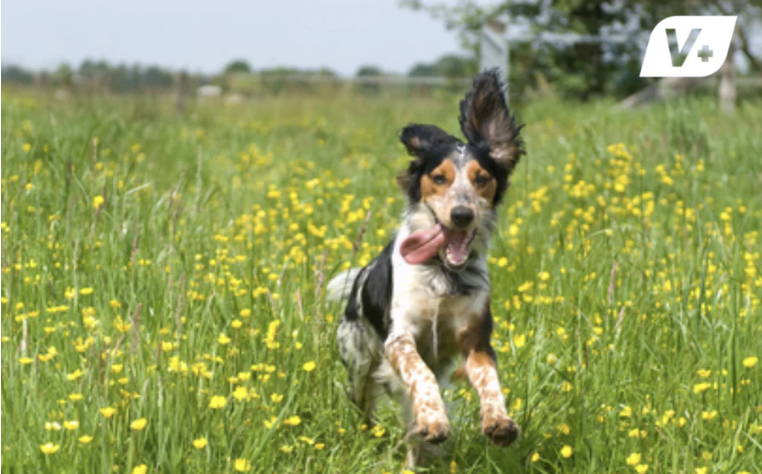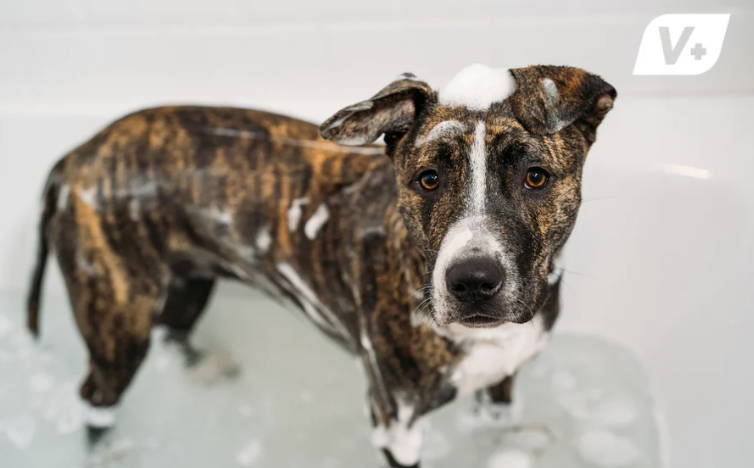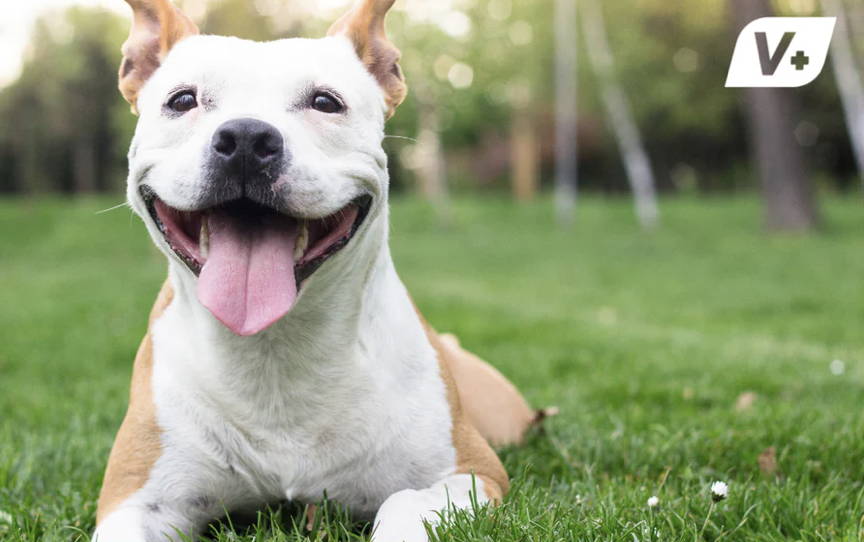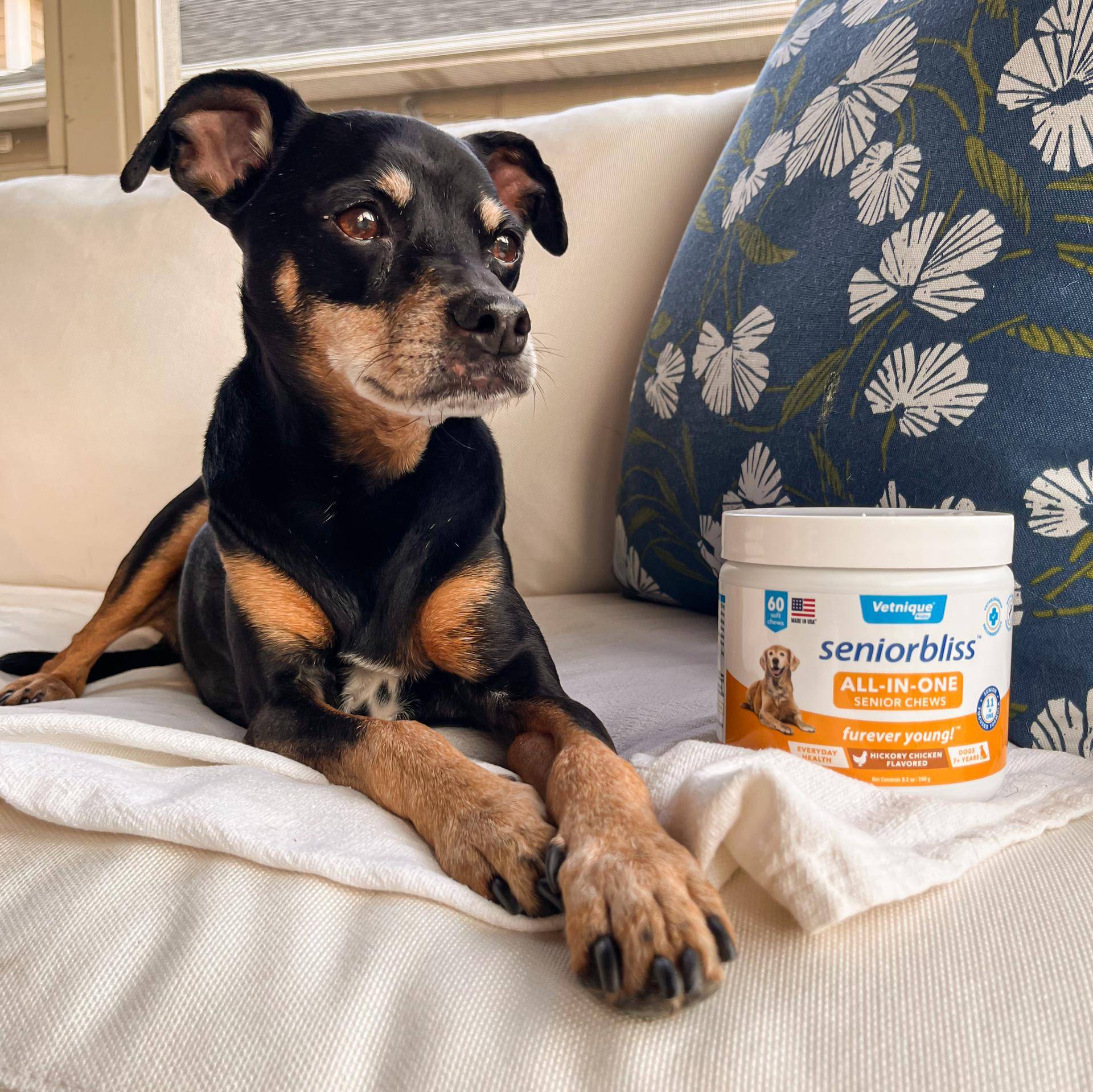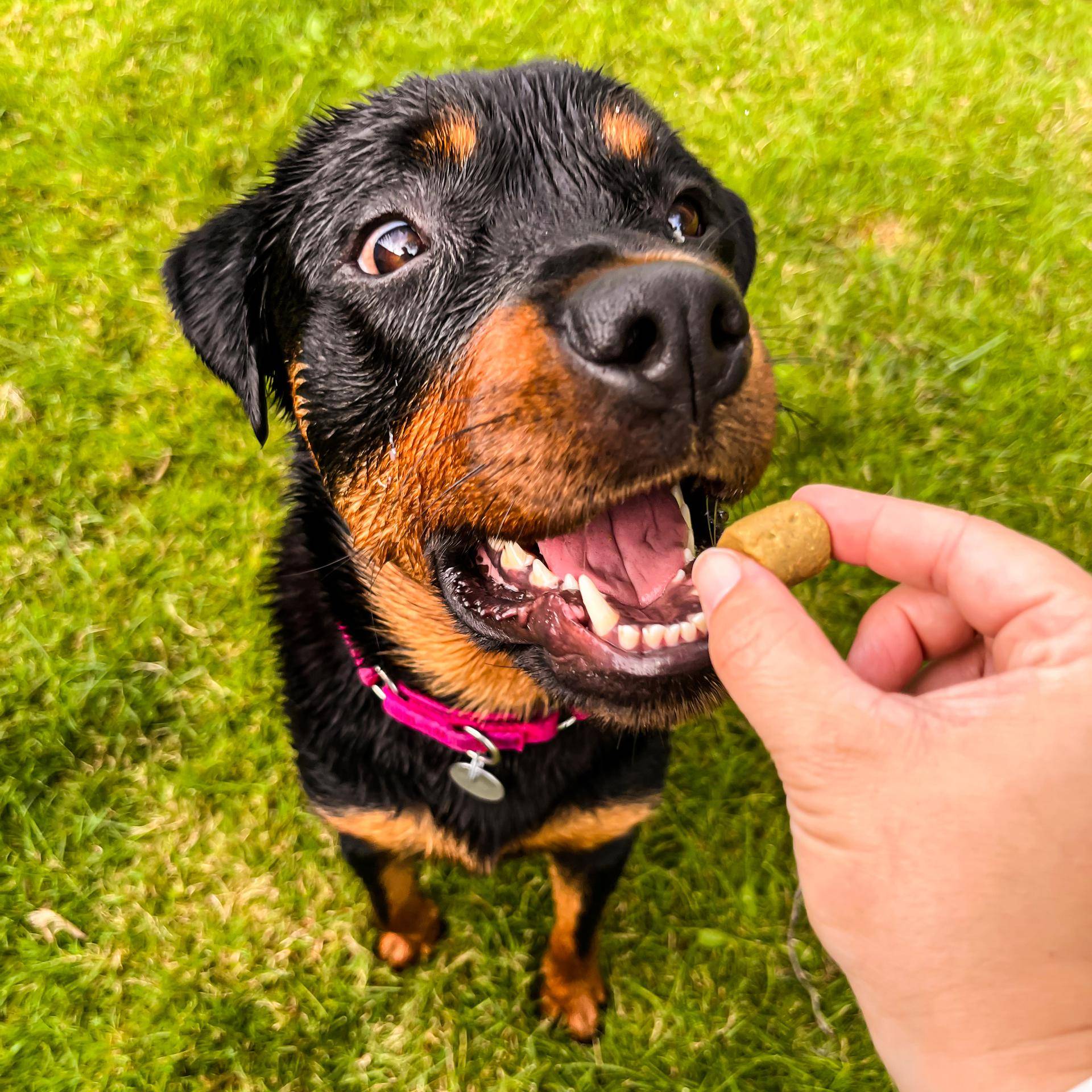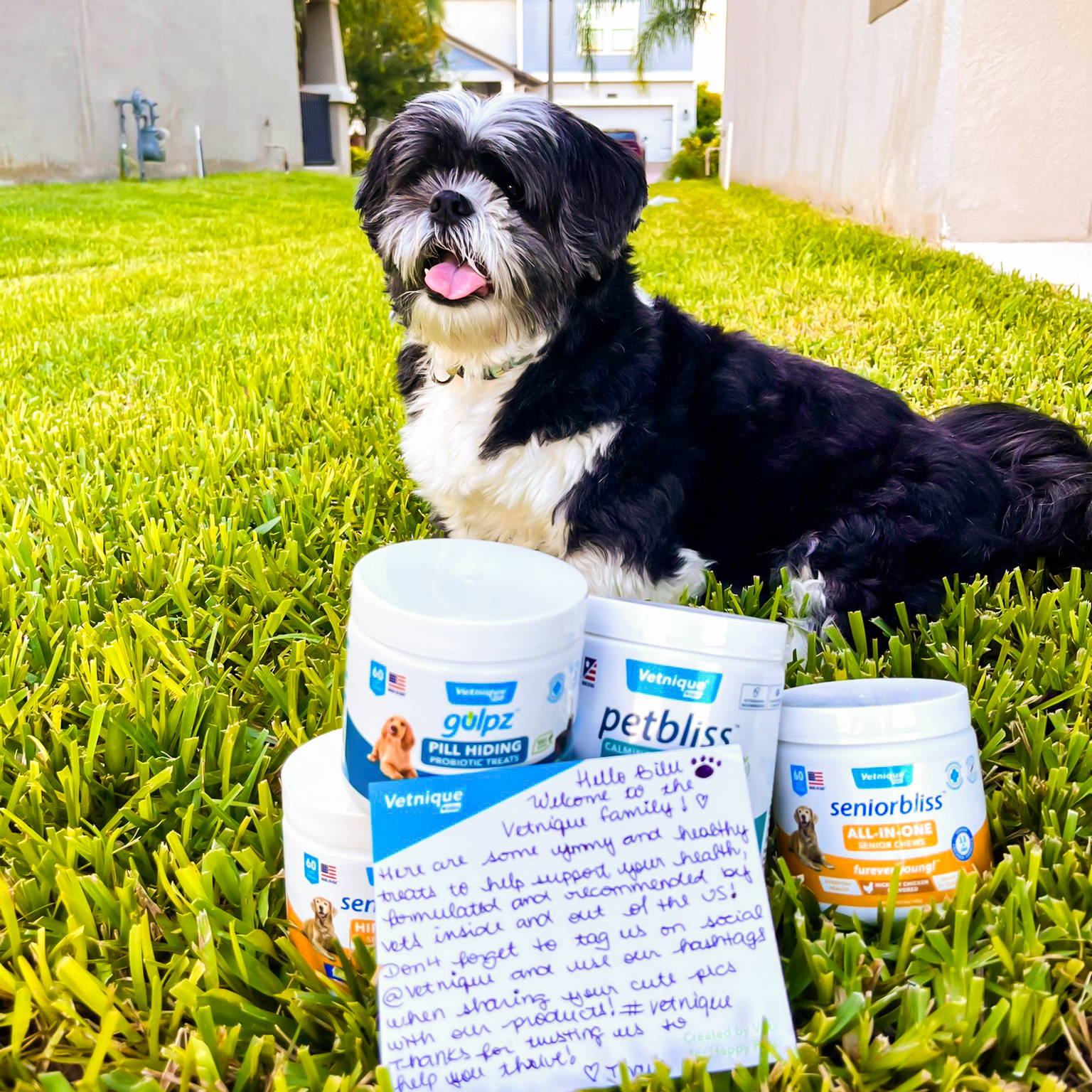EXERCISING SENIOR DOGS: 9 TIPS TO KEEP OLDER DOGS HEALTHY
Jump to Section
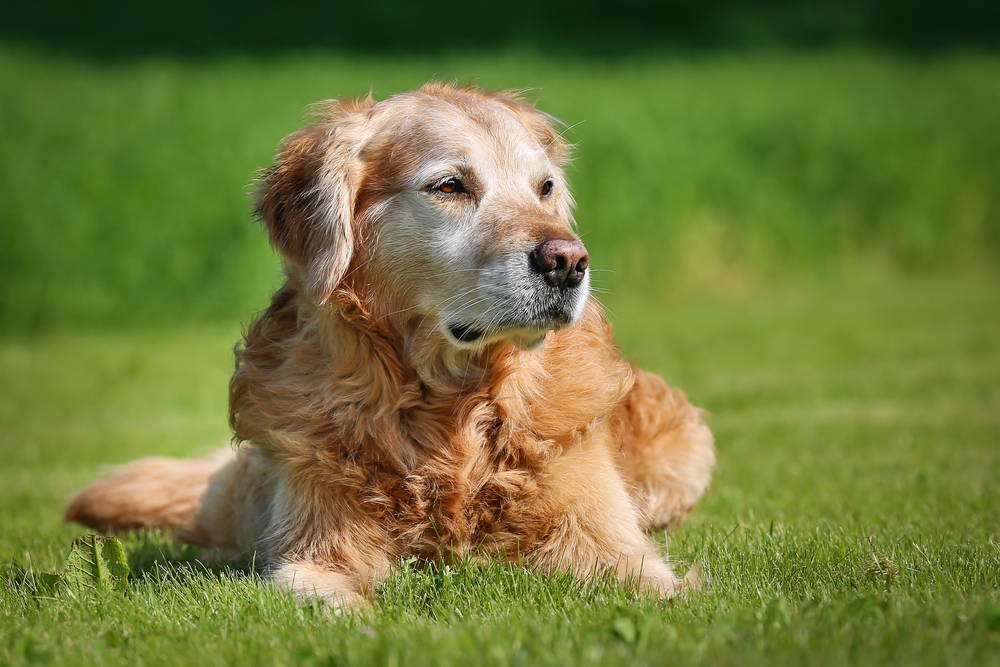
9 TIPS TO KEEP OLDER DOGS HEALTHY
CONTINUE TO ENJOY WALKS
CHANGE YOUR SCHEDULE IN SUMMER
Your older dog becomes more sensitive to extreme temperatures as they age. In the summer consider going for walks earlier in the morning, or later in the evening when the temperatures tend to be cooler.
DRESS APPROPRIATELY IN WINTER
Even if you’re not prone to playing doggie dress up with outfits or costumes, as your dog ages, dressing appropriately in the winter is very important. Invest in a sweater or jacket for frigid days, as well as some little booties to protect their pads.
CROSS-TRAINING
If the only exercise your dog gets is walking, it can put too much stress on the same muscles and joints. Cross-training for older dogs focuses on other parts of the body to reduce strain on the legs and hips. Believe it or not, you can find all kinds of exercise programs for dogs––including yoga and pilates. These exercises are good for the mental and physical health of older dogs, and can be fun for you to do together! Your vet might be able to recommend a local trainer or facility offering cross-training for your senior pup.
FOOTING
You might find your older dog doesn’t want to walk on asphalt and gravel as they age. This will be particularly noticeable in the heat of summer when hot asphalt can burn their sensitive pads. If possible, choose a grassy park where they can enjoy walking on softer surfaces while getting some senior dog exercise and socializing.
SHORTER WALKS
Pay specific attention to how your dog moves and if they seem stiff following a walk. Although they might still enjoy getting exercise, you will have to reconsider how much exercise is too much for older dogs. Take cues from your pet and look for signs of shortened breath, panting, stiffness and tiring. These are all signs you need to shorten your dog walks.

DISCUSS WEAKNESSES WITH YOUR VET
If your pet has certain ailments such as hip dysplasia or arthritis, your vet can recommend the best exercises for them. Certain conditions weaken specific muscles and/or joints so choosing exercises that help strengthen those areas can help. Your vet can also offer advice on what types of exercises to avoid so you don’t aggravate their condition and interfere with their ability to keep active.
CONSIDER SWIMMING
Water helps protect your dog’s muscles and joints. You can add swimming to their activities to switch things up a bit, and also allow them to work out more effectively. Whether it is a doggy pool or local lake, swimming is a great form of exercise that strengthens their body without stressing their muscles and joints.
In fact, swimming and water exercises are often prescribed for dogs recovering from surgery or accidents. Senior dogs should always wear a life vest to be safe. As well, if you have a bulldog, pug or brachycephalic breed, swimming is not recommended as they are at higher risk of aspiration pneumonia.
TRY SUPPLEMENTS
Starting with a healthy, balanced diet is important for supporting your senior dog. You can also add a dietary supplement to your senior dog's diet––one with nutrients and vitamins that support their age-specific needs.
Premium senior dog supplements make things easy for pet parents with an all-in-one formula that includes ingredients that support heart health, mobility, digestion, skin and fur health, and other essential functions.
Be sure to discuss the best supplements options with your veterinarian to see which formula could be best: one for all-in-one health, a specific hip and joint formula, or even a probiotic formula to support their digestive wellness.
BE SENSITIVE TO THEIR NEEDS
If you are a particularly active person, it might be tempting to push your older dog to keep up with your level of activity. However, you need to be sensitive to their needs and understand they might not be capable of joining you on that five-mile run every morning. Pay attention to their ability to participate in activities and adjust your time together to ensure you are not overdoing it.
You can continue doing the things you love on your own, and make special time to introduce new activities better suited to your dog’s aging body. You may even consider buying a dog stroller so you can still enjoy your time running together.
The trick to exercising older dogs is to avoid falling out of an exercise routine that can cause your pet to stiffen up and gain weight. With guidance from your vet, you can find the right balance of exercise and rest to ensure your older pet enjoys a happy active life well into their senior years!

Join the Pack!
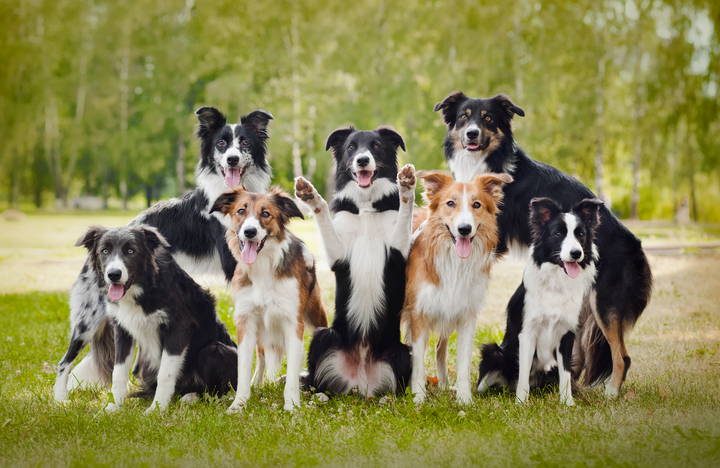
Sign up for exclusive deals, curated pet tips from veterinarians, and product launches!
Related Articles











